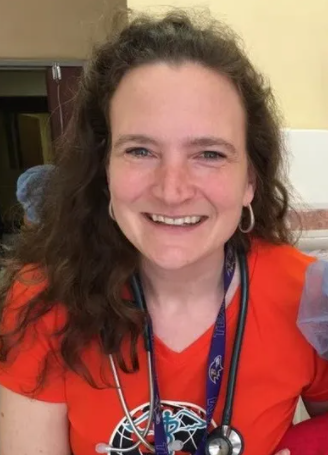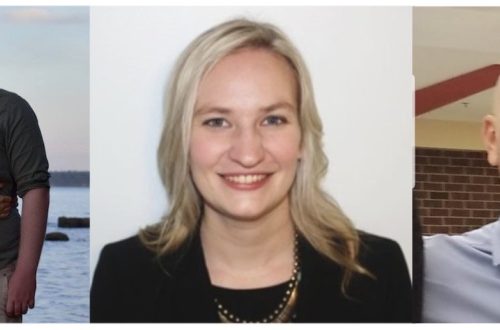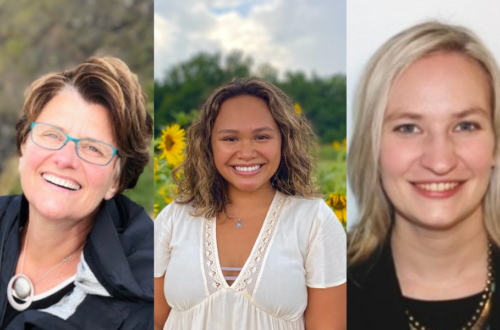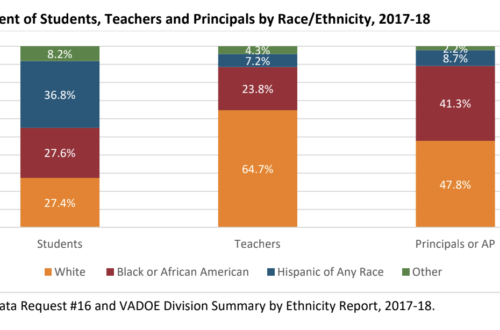The acting director said that the AHD will recommend targeted closures if the Covid caseload becomes unsafe.
Nikki Harris
On Thursday, September 16, Theogony spoke to Anne Gaddy, the acting director of the Alexandria Health Department (AHD) about the management of the pandemic in Alexandria schools. According to ACPS’s Covid-19 Dashboard, there are 64 cases in ACPS as of September 20. This conversation has been edited for length and clarity.
Nikki Harris: How are Alexandria schools broadly managing the containment of Covid and in-person learning so far?
Anne Gaddy: So the Alexandria Health Department (AHD) makes recommendations to schools in Alexandria, both Alexandria City Public Schools (ACPS) and private schools about what the appropriate prevention methods are. And we really have followed the Center for Disease Control and Prevention (CDC) and Virginia Department of Health (VDH) guidelines to make those recommendations. And so what we’ve recommended to ACHS and other schools is using a layers-of-protection approach, so that it’s not just one thing being done but it’s multiple different interventions. So there’s masking; staying distanced when possible; doing symptom screens upon entering school; encouraging vaccination; making sure that there’s seating charts available and class schedules available; and contract tracing; so if somebody does test positive we can quickly figure out who might have been exposed; and taking appropriate actions. So I think that a lot of those layers have been put in place, which is great.
Harris: Do you have any idea of how the public schools are managing Covid relative to the private schools?
Gaddy: I think it’s very school-dependent. It’s based on physical layout, number of students, and what layers schools are implementing. So I’d say some schools have really tailored their approach to their school but all schools are striving to follow all the basic principles.
Harris: Is the caseload in schools right now where you expected it to be before school began?
Gaddy: It was really hard to predict, and I think partly because a lot of what we see in the schools is reflective of what’s going on in the community. It is also hard to predict community transmission, so if there’s high community transmission, of course some number of those cases will just happen to be staff and students. Seeing a lot of cases in the community, we would expect that there are a lot of cases in the schools. What we try to prevent is the spread within the schools. The purpose of all the layers of protection is to prevent infection going from person to person within the school setting, so we have seen some spread in ACPS. But at this point, we have not seen any large outbreaks. So although we are managing a number of cases in the schools, I think the good thing is that at this point we haven’t viewed any large-scale outbreaks.
Harris: How much have cases risen in Alexandria since school started relative to the growth in cases in the summer? And how do you measure whether that can be attributed to in-person learning?
Gaddy: We don’t have an exact breakdown of how much cases can be attributed to ACPS, but what we can do is look at the age distribution of the cases. And what we have seen in the last couple of weeks is that we are starting to see a little rise in the proportion of cases among the younger-than-can-be-vaccinated (under-12) age group. And I think that’s not entirely unexpected. Those age groups may be socializing in school but also be socializing outside of the school setting as well. School hasn’t been back in session that long, so I think we will have to keep watching this over the next month or two to really see if there’s a significant impact on the number.
Harris: Do you have any indication of how much the under-12 population in Alexandria is managing Covid relative to the 12-17 population?
Gaddy: I don’t have a percentage in my head. We are going to have to watch those numbers over time.
Harris: What about nationally?
Gaddy: I don’t have a percentage in my head, but I know that the vaccinated among the 12-17 population are experiencing lower rates than the under-12 population.
Harris: So are the measures the AHD is advising to the elementary schools different or more stringent than those it is recommending to the high school and middle school?
Gaddy: No, they are the same for everyone, because we know that even in the older age groups not everyone is vaccinated, although we do have a high vaccination rate among teenagers in Alexandria. And we also know that there can be transmission among the vaccinated. The only difference is that if somebody who is over 12 is vaccinated, if they get exposed, they don’t have to quarantine.
Harris: Is there a tipping point of case numbers at which the AHD would advise schools that it isn’t safe to operate in person anymore? And if so, is there a fallback that it would suggest?
Gaddy: Yes, it’s hard to predict when this tipping point would occur. If transmission in the community remains high, then the possibility of a significant outbreak remains. If there is an unsafe number of cases, then we recommend ceasing in-person learning for the smallest number of people that it’s appropriate for. So if it seems like there’s a big amount of spread in a classroom, we would just say this classroom needs to stop going in person. If it’s one grade, it would just be that grade. If it’s all throughout the school, then we would recommend that for the school. What type of learning students and teachers switch to if any of those situations occur is really up to ACPS — the AHD doesn’t advise schools on whether to do hybrid or completely virtual learning.
Harris: So if, say, Lyles Crouch’s case number was too high but George Mason’s was still low, the AHD would only advise Lyles Crouch to close?
Gaddy: Correct. And it would only be for the amount of time we were sure that the transmission should have died down and everybody would be out of that isolation/quarantine period that was appropriate.
Harris: And how long is that?
Gaddy: It can depend on the outbreak, but it would probably be 1-2 incubation periods. So it could be two weeks to a month. But it would depend on the situation.
Harris: So is two weeks the minimum? Or could it be less than that?
Gaddy: It would depend on when we discovered the positive tests and who they were spreading to. I’m not sure I can say an exact time frame, but it would be the shortest time frame possible that is still safe in any situation.
Harris: Would the AHD advise all of ACPS to administer testing at any point? And if so, how would that be executed?
Gaddy: We are already surveillance testing. And to elaborate on that, we and the Virginia Department of Health (VDH) have advised schools to do weekly testing. And ACPS has agreed that that’s a good idea and has put that in place already for any staff members who aren’t vaccinated. And it is in the process of securing a vendor, someone who could come in to do testing for students on a weekly basis. And it would be voluntary, not required. The school system implements it, not the AHD. And the point of it is to test people who may be experiencing no or minor symptoms.
Harris: Is the testing of students only of the unvaccinated students?
Gaddy: I’m not sure if the testing will be offered to everyone or just unvaccinated individuals, but our recommendation is that schools focus on the unvaccinated population.
Harris: How likely do you think it is that there is a large outbreak that causes some closures?
Gaddy: It is hard to say. It depends on how long the community transmission is high, and how well the prevention measures are being followed in the schools. One thing that would help to prevent closures is that when people are having symptoms, they don’t just brush it off or go to school anyway, but instead they stay home and immediately get tested.
Harris: ACPS is administering temperature checks and daily symptom checklists right now, but besides those two things, there is basically only an honor system in place to keep students and staffers home if they are experiencing symptoms. So would the AHD advise ACPS to administer random testing for that reason?
Gaddy: I think the surveillance testing does that, since there are staffers who opt in to getting tested. We hope that a lot of students will volunteer to get tested. I think that will give a good sample of the school population.
Harris: How is the AHD to execute under-12 vaccinations once they are available?
Gaddy: We think the earliest that this would happen would be in late October. We would approach this the same way we have approached other groups, meaning that we would want to reach a large number of people quickly. So we would have some large-scale events that would be advertised to students and families for them to get their vaccines. Also, they would be able to get vaccines at pharmacies and pediatric clinics. So between the AHD large-scale events and these other sources, there should be plenty of vaccines available to be able to get to a large number of children within a short amount of time. And after we have done that initial vaccination outreach, we will then turn towards working with ACPS to offer some vaccinations at the schools and in smaller community settings to make it easy for people who have for any reason encountered barriers to getting vaccinated through those other channels.
Harris: Do you have any indication of how much the under-12 population will get vaccinated once it is FDA-approved for them to do so?
Gaddy: I can tell you that 94 to 96 percent of 12-17 year olds are vaccinated. If that’s any indication of how parents are feeling about their kids getting vaccinated, we would expect that it would be a fairly high vaccination rate.





